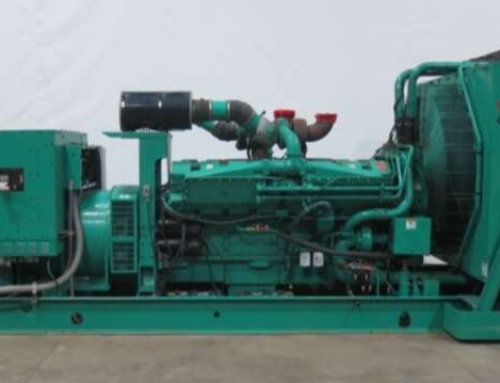Power outages are on the rise in the United States. In fact, the frequency of power outages has doubled every five years since 2000. Power outages have a wide-ranging impact on our society. They can disrupt transportation, close essential businesses like grocery stores and gas stations, and present health risks. So how does one stay prepared? The answer is with a portable diesel generator.
This is particularly important if you live in an area that is affected by long-term power outages from severe storms. Hurricanes, tornados, and blizzards are all capable of knocking out power for days and even weeks.
If you’re among those afraid of losing power and are looking for a solution we’ve assembled this portable diesel generator buying guide to help answer any questions you might have to help you buy the right generator.
Portable Gas vs Portable Diesel Generator
Everyone knows about gasoline engines. We have them in our cars, trucks, and lawnmowers, and there’s a station seemingly on every street corner. Unless you drive a tractor-trailer you probably don’t own a diesel engine.
The truth is that diesel engines are more efficient than gasoline engines, and that can be a real plus when the power goes out. According to the Department of Energy, diesel engines are 30% to 35% more efficient than their gasoline counterparts. They also have fewer moving parts which means less maintenance over the life of the engine.
Gasoline is cheaper than diesel, so if you were considering the cost for a car your gas is cheaper, somewhere around a dollar or more per gallon. There is something called off-road diesel, or farm diesel, or dyed diesel, and is produced for off-road use in tractors, power equipment, and diesel generators.
There is no difference in performance between off-road and regular diesel. In fact, they dye the diesel red so inspectors can spot illegal use in tractor-trailers. The only difference is the price because it isn’t taxed. Off-road diesel is as much as a dollar cheaper than regular diesel, so if you can find a source, your cost is about the same as gasoline.
What Size Diesel Generator Do I Need?
This all depends on what you want or need to power, and everything is measured in watts. Appliances like a stove or refrigerator use a lot of watts to run, whereas light bulbs and fans use next to nothing. Your heating and airconditioning units will use up the most, especially commercial-grade units.
You should download a wattage guide to help you calculate your particular needs.
Prioritize Your Needs
You’ll want to add up all the appliances you plan on running at the same time. Your refrigerator and freezer should be a priority as your food will spoil if they aren’t running for extended periods.
Next is your heater or air conditioner. If your power outages occur in the winter and the weather is extremely cold you’ll need your heat pump to work. If you live on the Gulf of Mexico and hurricanes knock out your power you’ll want the air conditioner on. These two major appliances can draw the most electricity so make sure you account for them.
After these, you might need to run things like a stove, microwave, and dishwasher. Wattages on these appliances vary so check your particular appliance for accurate numbers.
Lastly, you’ll want to power your lights, fans, televisions, radios, computers, and other small appliances. These generally draw very little wattage, but you should know those numbers.
Factor Startup Watts
Adding them all together you come up with a number, but there’s one last thing to consider. Most electrical appliances draw more power on startup. The bigger the appliance, the more power it will need to start. After startup, the appliances draw less electricity to operate.
Let’s say your air conditioner runs at 20,000 watts but draws 22,000 watts on startup. You don’t want to buy a generator that maxes out at 20,000 watts because it will never start your air conditioner. You’ll need one that exceeds your startup watts. Electric ovens and heat pumps for larger buildings also draw a lot of electricity on startup.
Check this one.
Model specs:
Used MTU 200 kW standby (180 kW prime) rental grade portable diesel generator set, model DS250, SN-P070612001. John Deere 6068HF485 engine rated 314 HP at 1800 RPM, SN-PE6068L005067, EPA Tier 3 emissions. 3 position voltage selector switch 3/60/277/480V or 3/60/120/208V or 1/60/120/240V single phase. 800 Amp main-line circuit breaker. PMG – permanent magnet generator. Coolant heater. Deep Sea digital control panel. Sound attenuated enclosure. 260 gallon UL 142 listed sub base fuel tank with secondary containment. 549 Hrs. Year 2007
Quick link: https://csdieselgenerators.com/used-mtu-ds250-rental-grade-6068hf485-diesel-generator–549-hrs–epa-tier-3-3610.html
Hard-Wired Transfer Switch vs Plug-and-Play
Nearly all generators have plug-and-play capability. They come with a variety of outlets from which you can run different types of cords to power everything.
The keyword here is cord, and you’ll need one long enough to reach your appliance from the generator outside your building. This isn’t a big deal with most appliances. If they plug into your wall outlet, a regular extension cord will work. This isn’t ideal for large commercial properties.
Ovens and clothes dryers use special cords, so first make sure your generator has the outlet for the appliance. Next, you’ll need a cord long enough to reach, and these specialty cords can be very expensive the longer they get.
Cords get in the way too. They are a trip and fall hazard, and they present the potential for electrocution if the cord is old or damaged. That said, if you are only concerned with powering one or two appliances and they don’t require a long cord, you can get by fine with a plug-and-play setup if you’re careful.
The transfer switch offers the easiest distribution of power from your generator to your appliances because it routes the electricity generated through your building’s electrical fuse box.
Transfer switches are installed on the outside of your building on the other side of the wall to your fuse box. The transfer switch has a built-in safety feature. In order to turn the power on going from the generator into the fuse box, you must first turn off the power coming in from the electric company.
This safety feature uses a manual slide that physically blocks the switch from the generator from turning on while the switch from the power company is also on. This prevents electricity from back-feeding into the system or generator and causing damage.
Ready To Buy a Generator?
At Central States Diesel Generators, we have a large inventory of new and used portable diesel generators.
You can browse our inventory online or call us with any questions you might have. Our expert technicians will help you choose the right generator for your needs.
Frequently Asked Questions About Portable Diesel Generators
-
What is the difference between an Inverter and a Portable Generator?
A portable diesel generator produces D/C voltage, which is then delivered to the rotor which then converts the D/C to A/C with the help of brushes. On the other hand, inverter generators change the D/C to A/C through electronic microprocessors.
-
Can I use my Portable Generator indoors?
- It is strongly advised that you place your portable diesel generator outside. Since these generators release carbon monoxide, they can cause poisoning which is often fatal. Make sure the generator is placed far from all doors and windows, in an area with ample ventilation.
-
Does my Portable Generator need to be grounded?
Yes. It is important that your portable diesel generator is grounded. This can save you from any instances of electrocution. Moreover, grounding the generator is also key to meeting the applicable federal, state, and local regulations.
-
Why is it important to not overload my Portable Generator?
Overloading your portable diesel generator can have an adverse impact on your electronics and heavy appliances. Hence, make sure to use the portable generator only when absolutely necessary and only to power the most needed equipment.







![Big Generators: How does it work? [with 7 Industrial Applications]](https://csdieselgenerators.com/wp-content/uploads/2023/06/commercial-operations-500x383.jpeg)